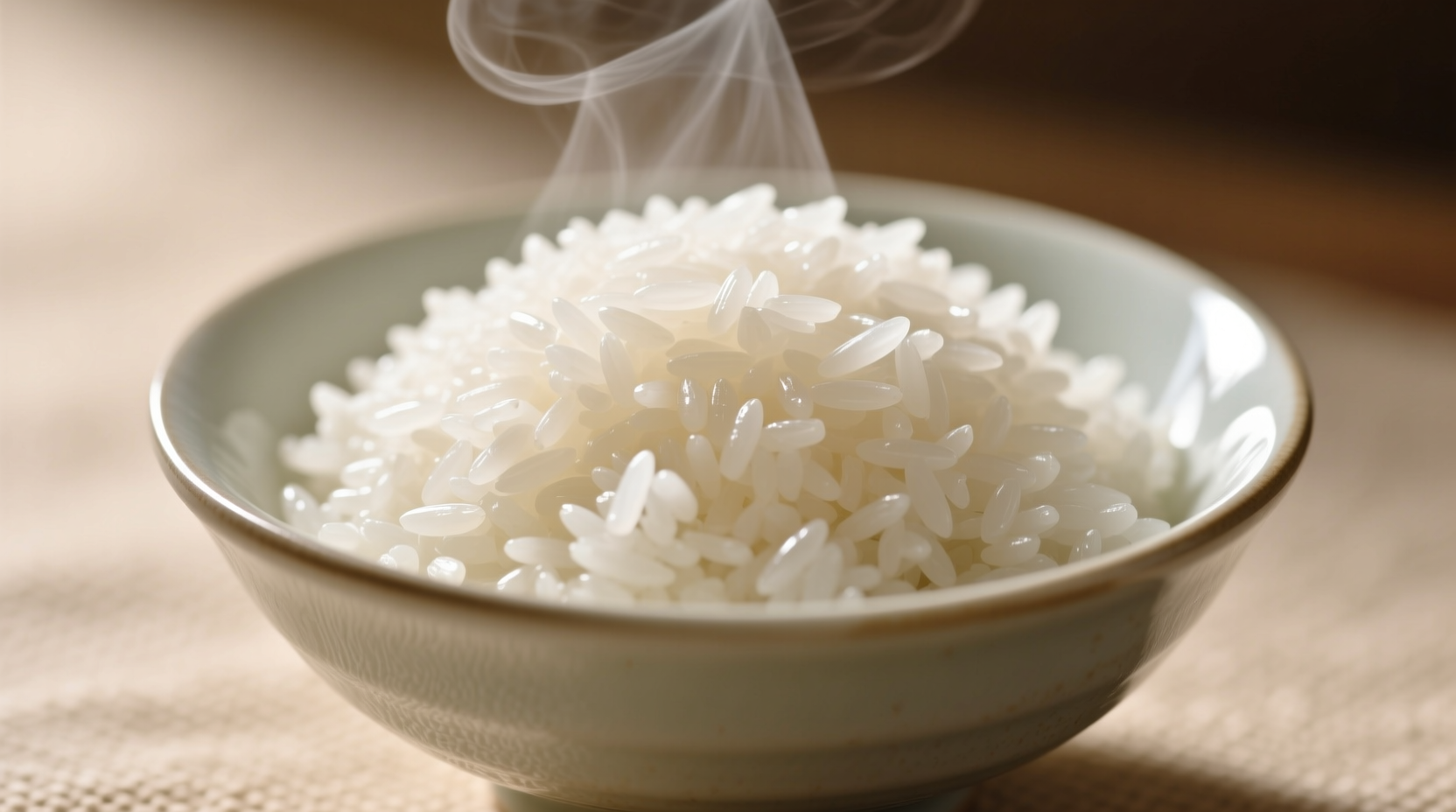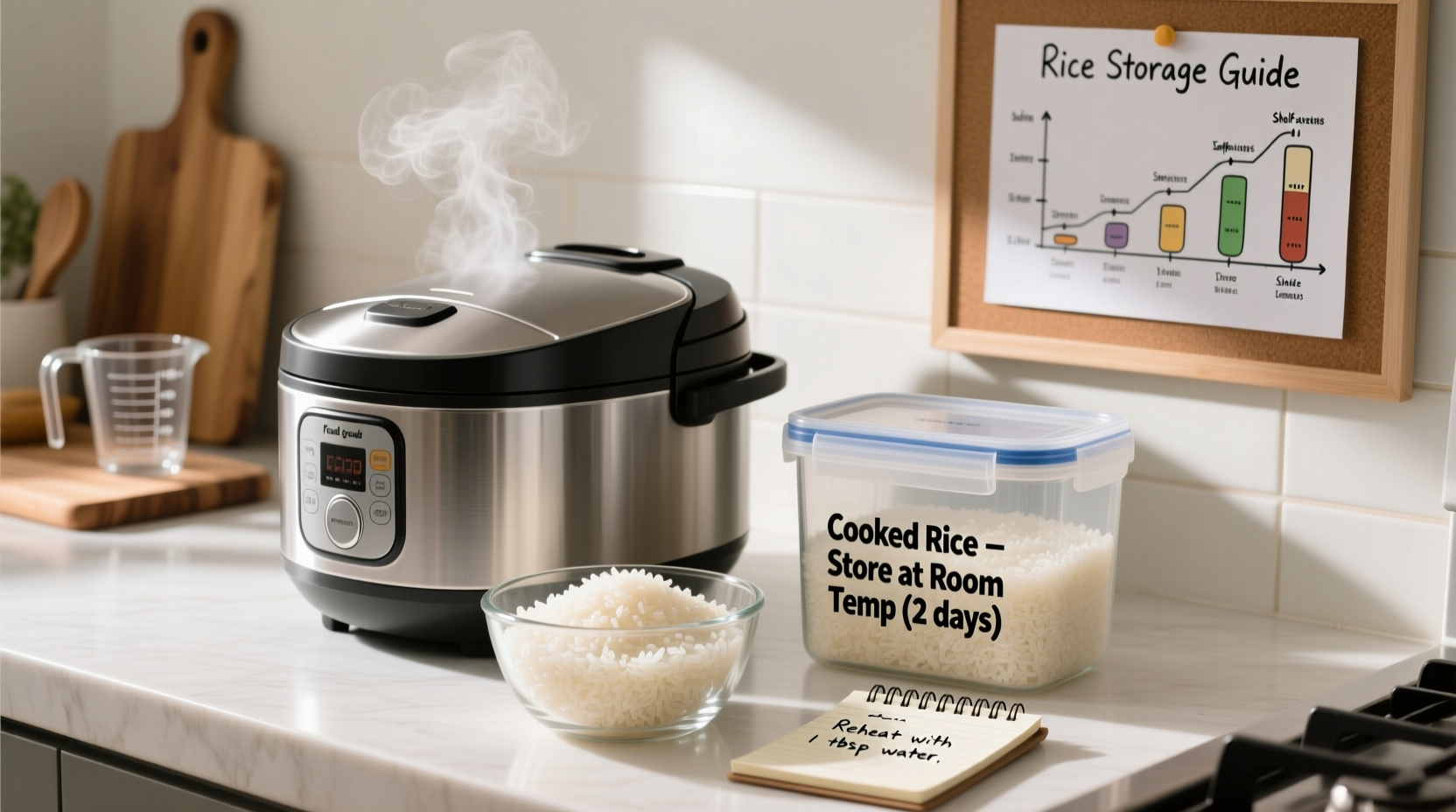Getting consistently perfect rice isn't luck—it's understanding the science behind starch gelatinization and moisture control. Whether you're cooking basmati for curry or sushi rice for rolls, these evidence-based techniques guarantee fluffy, separated grains every time while keeping your family safe from foodborne illness.
The Science Behind Perfect Rice Texture
Rice quality depends on two starch types: amylose (firmness) and amylopectin (stickiness). Long-grain varieties like jasmine contain more amylose (20-25%), creating separate grains, while short-grain sushi rice has higher amylopectin (80-83%) for that characteristic cling. When water hits 185°F (85°C), starch granules absorb water and swell—a process called gelatinization. Proper rinsing removes surface starch that causes gumminess, while the post-cooking rest allows steam to redistribute evenly.
| Rice Type | Water Ratio | Cooking Time | Special Notes |
|---|---|---|---|
| White long-grain | 1:1.5 | 15-18 min | Rinse until water runs clear |
| Brown rice | 1:2 | 40-45 min | Soak 30 min first |
| Basmati | 1:1.3 | 12-15 min | Toast 2 min before adding water |
| Sushi rice | 1:1.1 | 18-20 min | Add 1 tbsp rice vinegar after cooking |
Step-by-Step Perfect Rice Method
Preparation Phase: Setting Up for Success
Measure rice precisely using a dry measuring cup—never eyeball it. For every cup of rice, use 1.5 cups water for most white varieties (adjust per the table above). Rinse under cold water for 30-60 seconds, swirling gently until the water runs mostly clear. This critical step removes excess surface starch that causes clumping. Professional chefs like Antonio Rodriguez emphasize that "rinsing isn't optional—it's the difference between restaurant-quality rice and mush."
Cooking Process: Precision Timing Matters
Combine rinsed rice and measured water in a heavy-bottomed pot with a tight-fitting lid. Bring to a boil uncovered, then immediately reduce heat to the lowest setting, cover, and set timer:
- White rice: 15 minutes
- Brown rice: 40 minutes
- Do NOT peek during cooking—steam loss disrupts the process
When timer ends, remove from heat and let stand covered for 10 minutes. This rest period allows residual steam to finish cooking the rice and redistribute moisture evenly. Fluff with a fork just before serving.

Avoiding Common Rice Problems
Mushy rice? You likely used too much water or didn't rinse properly. For immediate salvage, spread rice on a baking sheet and bake at 350°F (175°C) for 5 minutes to evaporate excess moisture. Dry or crunchy rice? Add 2-3 tbsp hot water, cover, and return to low heat for 5 minutes. Burnt bottom? Next time use a heavier pot and lower heat. If it happens, carefully transfer unburnt rice to a new pot—don't scrape the bottom.
Food Safety-First Rice Storage Guide
Improperly stored rice causes 63,000+ food poisoning cases annually in the US according to CDC data. Bacillus cereus spores survive cooking and multiply rapidly between 40-140°F (4-60°C). Follow these evidence-based storage protocols:
Cooling Properly: The Critical First Step
Spread cooked rice in a thin layer on a baking sheet—never store it hot in a container. This brings it below 70°F (21°C) within 30 minutes, stopping bacterial growth. The FDA Food Code specifies that cooked rice must reach 41°F (5°C) or below within 4 hours.
| Storage Method | Maximum Duration | Reheating Instructions |
|---|---|---|
| Room temperature | 2 hours max | Discard after 2 hours |
| Refrigerator (40°F/4°C) | 3-4 days | Add 1-2 tsp water, cover, microwave 1-2 min |
| Freezer (0°F/-18°C) | 6 months | Thaw in fridge overnight or microwave defrost |
Freezing for Long-Term Storage
Portion cooled rice into 1-cup servings in freezer bags, removing as much air as possible. Lay flat for quick freezing. Frozen rice thaws in 15 minutes at room temperature and reheats perfectly in the microwave. Food scientist research shows flash-frozen rice maintains texture better than refrigerator-stored rice beyond day 3.
When Standard Methods Don't Apply
Certain situations require technique adjustments. At high altitudes (above 3,000 feet), increase water by ¼ cup per cup of rice and extend cooking time by 25% due to lower boiling points. When using a rice cooker, the built-in sensors compensate for most variables, but always follow manufacturer's water ratios. For meal prep, cook rice with 20% less water—it will absorb moisture from other ingredients during storage.
Advanced Rice Techniques
For restaurant-quality results, try these pro methods: Toasting basmati in 1 tsp oil before adding water enhances nuttiness. Adding a strip of kombu seaweed during cooking improves digestibility. For sushi rice, mix in seasoned vinegar while rice is still warm to ensure even absorption. When reviving frozen rice, sprinkle 1 tsp water per cup and cover with a damp paper towel during reheating.











 浙公网安备
33010002000092号
浙公网安备
33010002000092号 浙B2-20120091-4
浙B2-20120091-4